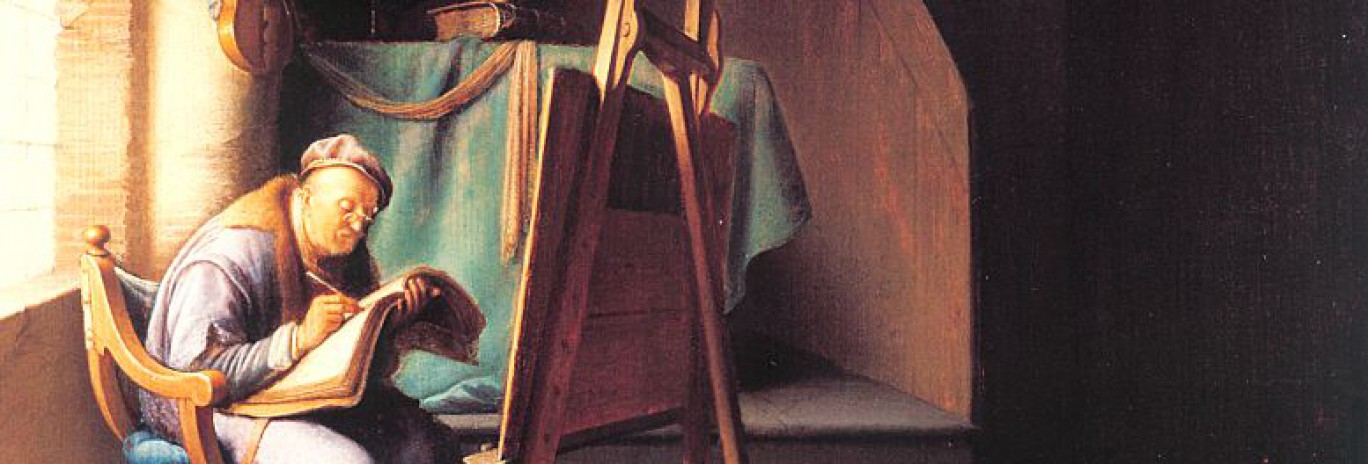Events
Sven Dupré hosted by Global History and Culture Centre as IAS Visiting Fellow, March 6-10, 2017
Sven Dupré will be hosted by the Global History and Culture Centre as an IAS Visiting Fellow from March 6 to March 10, 2017. Professor Christine Göttler from the University of Bern will join him as an IAS Residential Fellow in the same week.
Events
1.Tuesday 7 Mar, 12-1.30pm, IAS seminar room, Millburn House
Round table on ‘Re-enacting Historical Processes of Making’ (Sven Dupré)
How can we go about re-enacting historical processes of making? How does this compare to re-creating objects that existed in the past and that are now rare, or rarely made? What can we learn from such reconstructions about the way the original objects were produced and consumed? Do we learn something different from re-enactments of historical processes of making on the basis of texts than from reconstruction on the basis of preserved historical artefacts? Is this different from replication in (the history of) science? How have reconstructions been used in the past to preserve, teach or promote the techniques of the arts? These questions are of interest to artists, archaeologists, conservators, anthropologists and musicologists, and to historians of art, science, technology, trade, and consumption.
2. Wednesday 8 Mar, 12-1.30pm, H545 Humanities Building
PG Masterclass on ‘Individuals and Cities in Global History: Emmanuel Ximenez and Early Modern Antwerp’ (Sven Dupré and Christine Göttler)
The Ximenez d’Aragão were among the great Portuguese New Christian merchant houses whose overseas trading network extended to India, Africa, Brazil, and the Spanish Americas. The involvement of the Portuguese merchant community in maritime trade was instrumental in the rise of Antwerp as a ‘world city’ where new goods, new merchandise, and new knowledge and information were circulated and exchanged. Located in close proximity to the stock exchange (the city’s economic centre) and the Sint-Jacobskerk (Antwerp’s wealthiest parish church), the Ximenez house, with its impressive façade, was a major landmark on Antwerp’s most splendid street, the Meir. A period visitor would have seen this house as evidence of the Portuguese contribution to the transformation of Antwerp into the greatest city of commerce in the north (before the rise of Amsterdam) and a centre of the manufacture and trade in luxury goods.
The 1617 inventory of Emmanuel Ximenez offers a window onto this world. Notable items in the inventory include a library of almost 1000 books with a heavy concentration of alchemical, astrological and mathematic works; the first space dedicated to the storage of porcelain documented for Antwerp; and works of art, including Peter Paul Rubens’s first maritime allegory, “Birth of Venus”, which was probably designed according to Ximenez’s wishes. The inventory provides a unique opportunity to examine the interrelationships between mercantile activity, intellectual inquiry, practices of kinship and religion, and engagement in conspicuous consumption within the cosmopolitan urban culture of early modern Antwerp.
Sven Dupré and Christine Göttler are lead investigators in a project that aims to publish a transcription, translation and analysis of the 1617 inventory. The project is supported by a rich, open-access website that contains, among much else, an introduction to the inventory and short descriptions of the objects in the inventory, from ceramics to clothing to exotica.
This masterclass is supported by Sustainable Cities Global Research Priority, University of Warwick.
3. Wednesday 8 Mar, 5-7pm, R0.3/4 Ramphal Building
Public Lecture: ‘Technical Art History: Historicity of Materials, Processes of Making and Writing, and Sensory Expertise’ (Sven Dupré)
In the past years a new field of research has emerged, which is commonly known as technical art history. This lecture will discuss three foci of technical art history – the historicity of materials, historical processes of making, and the constitution of expertise – which are central to ways in which we approach technical art history in an open and interdisciplinary dialogue with other disciplines, such as the history of science, technology and medicine. This is also how we approach technical art history in ARTECHNE, a five-year project supported by the European Research Council. The ARTECHNE project writes a long-term history of the theory and practice of the study of ‘technique’ in the visual and decorative arts between 1500 and 1950. The three central research questions here are: (1) what is technique in the visual and decorative arts, (2) how is technique transmitted and studied, and (3) who is considered expert in technique, and why? More info: www.artechne.nl.
Sponsors
- Institute of Advanced Study, University of Warwick
- Sustainable Cities Global Research Priority, University of Warwick
- Connecting Cultures Global Research Priority, University of Warwick
- The Leverhulme Trust


